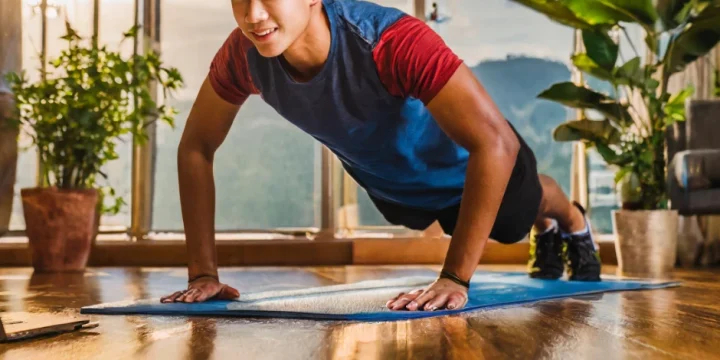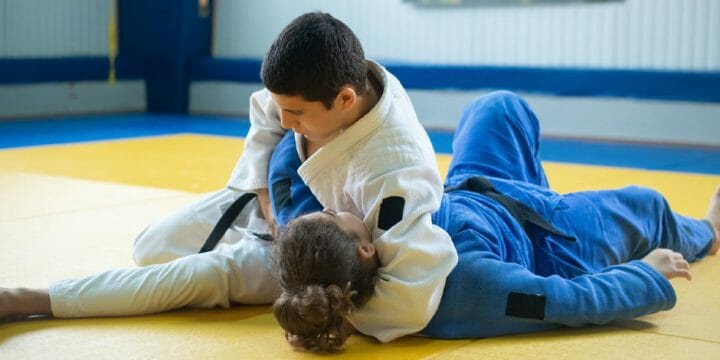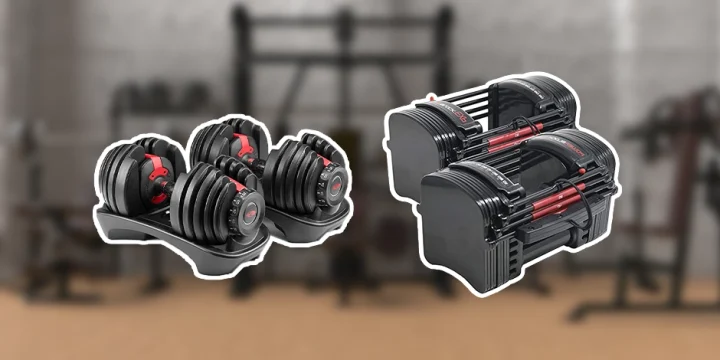I regularly work with several martial arts coaches to provide their fighters with strength training. During this time, I’ve learned a lot about each combat sport, with Judo and BJJ being two of the most popular ones.
I also gathered many notes from those martial arts coaches who have helped me address the question for this post.
How are Judo and BJJ different? And what advantages do they bring my average clients?
Quick Summary
- Judo and BJJ are both popular combat sports with similar origins but distinct differences in philosophy, techniques, and competition rules.
- Judo focuses on achieving maximum effect with minimum effort, emphasizing throws and takedowns for point-scoring, while BJJ centers around using leverage and technique to force opponents into submission.
- Approximately 5 to 10 years are required to achieve a black belt in Judo, while BJJ typically requires 8 to 12 years, reflecting the depth and complexity of these martial arts.
- Personally, I find that the discipline and mental resilience developed in both Judo and BJJ are invaluable, not just in martial arts but in everyday life as well.
Origins of Judo
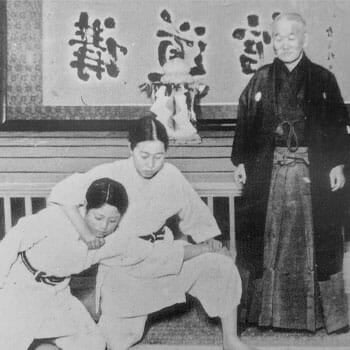
Judo was created in Japan by Jigoro Kano, and he took a unique approach to combining the martial art of Jiu-Jitsu with mental discipline.
Kano later brought Judo to Europe, and it became an official Olympic sport back in 1940.
Since then, the following has grown all over the world, and new styles and techniques have regularly appeared.
Judo practitioners are known as judoka, and they follow a strict discipline of respect for each other.
Judo principles involve training balance and stability and the techniques to break the balance of an opponent.
Origins of Brazilian Jiu-Jitsu

Kano brought Judo to Europe, but it was Mitsuyo Maeda who took Judo Kodokan to Brazil.
There, Kodokan evolved, emphasizing ground techniques, giving birth to Brazilian Jiu-Jitsu.
Due to their shared Kodokan roots and focus on groundwork, Judo and BJJ appear quite alike, both centering on mastering balance and using tactical moves for takedowns.
“Brazilian jiu-jitsu descends from a martial art originally developed in feudal Japan, before being exported to Brazil on a wave of Japanese immigration around the turn of the 20th century.”
- Jamie Millar, writer at MensHealth.com
Comparison Between Judo and BJJ
While the style and groundwork of both fighting categories look similar, we had instructors from both disciplines specifically highlight the difference.
1. Philosophy

Brazilian Jiu-Jitsu's philosophy is about using mental strength, not force, against an opponent.
Practitioners ground themselves, using mind, body, and spirit to turn an opponent's force to their advantage.
Similarly, Judo, meaning "gentle way" in Japanese, focuses on efficiency over force.
Both martial arts emphasize smart, tactical takedowns.
Their strict rules and principles not only harness power but also shape a disciplined lifestyle, appealing to aspiring martial artists.
2. Techniques
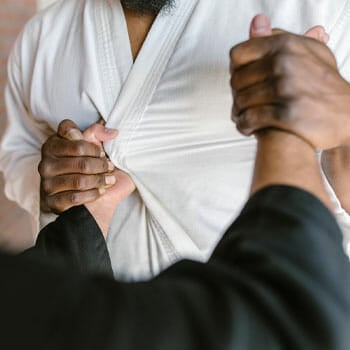
iu-Jitsu and Judo techniques are very similar sports, but there are some notable differences.
In my experience working with fighters, I've noticed that those who train in Judo develop a remarkable sense of balance and timing, which is crucial for executing perfect throws.
In addition, Judo's influence on law enforcement and military training globally is significant, with its throws and holds adapted for practical, non-lethal restraint techniques."
Along with the takedown skills, some armbar moves and arm locks are part of standard Judo training and point-scoring.
Brazilian Jiu-Jitsu focuses more on grappling and wrestling, with the main goal being to force competitors into submission rather than winning a point.
What’s great about both of them is that they are perfectly suited to a self-defense situation.
3. Competition

The competitive fight is probably where the two show the biggest difference.
In a BJJ match, you’ll see much more takedown moves that are not allowed in Judo at all.
Jiu-Jitsu is also much more focused on winning a match by submission rather than scoring individual points for a specific type of takedown.
Judo is probably a more suitable sport for world-stage tournaments like the Olympics because of the strict points system and rules it follows.
Scoring an Ippon, Waza-ari, and Yuko all bring a difference in match outcome.
Ippon is the highest score and means an immediate win.
A fighter can score this through a takedown throw that lands the opponent on the ground straight on their back or with an arm lock.
Waza-ari gives another high score in a match, but it doesn’t end it immediately.
4. Clothing
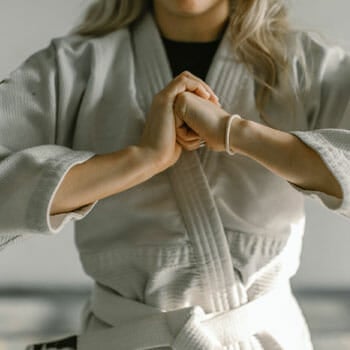
BJJ and Judo are similar to each other in their clothing. However, the BJJ requirements are less strict than for Judogi.
In Jiu-Jitsu, it’s common to have different colors on the belt, indicating the skill level of a fighter.
In Judo, the suit has to be white, and it also has to be a very specific size to be competition-legal.
There’s also a form of no-gi Jiu-Jitsu, which creates a very different competition with much more attention on takedown throw techniques that grip the neck, head, arms, wrists, and ankles.
It is a style of fighting you won’t find as part of Judo.
“The GI top should reach the athlete’s thigh, and the sleeves should come to no more than 5 cm from the athlete’s wrist when the arm is extended straight parallel to the ground. GI pants should reach no more than 5 cm above the tibial malleolus (ankle bone).”
- IBJJF Uniform Requirements
5. Training Equipment
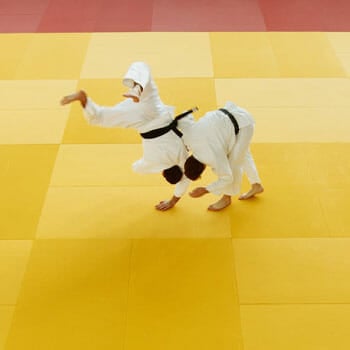
This is one area where you’ll find very few differences.
A BJJ gym will look very similar to a Judo one, with a large open area and a thick rubber floor mat.
You’ll be glad for the rubber mats when you experience your first takedowns.
Overall, there really isn’t much equipment in either martial art, as it’s a practice of physical contact without kicking or punching.
That’s why there’s no need for heavy bags or weight training equipment.
The simplicity of the training environment in both arts reflects the pedagogical approach focused on direct, hands-on learning and the development of intuitive understanding through practice.
6. Belt System
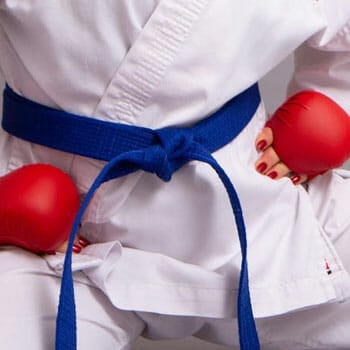
Both martial arts disciplines have a belt-level system that starts at white and goes to black. But it’s the belts in between where the difference is with both of them.
A judoka will go through a white, yellow, orange, green, blue, and then brown belt. And in BJJ, fewer belts are going through white, blue, purple, and brown.
How fast you progress in both depends on how often you go to training sessions to learn all the takedown forms. I've seen some of my clients progress at different rates in Judo and BJJ.
More exposure to a Judo or BJJ match will also help any practitioner progress.
When it comes to the black belt, it usually takes people 5 to 10 years in Judo and a bit more for Jiu-Jitsu with about 8 to 12 years.
7. Rules

BJJ and Judo rules are quite different, especially when it comes to match rules.
You’ll find that there’s a lot more allowed in Jiu-Jitsu rules in the way of how you can use your arms and legs during takedowns.
In a Judo match, the ultimate goal is Ippon, which is an immediate victory. I recall a match where one of my clients achieved an Ippon; the look of accomplishment and joy on their face was unforgettable. It was a testament to their hard work and the effectiveness of the techniques they had learned.
You also gain points for certain other moves, and many rules define these.
In Jiu-Jitsu, the main goal is full submission. But the BJJ rules also list out points in different categories of moves.
These count if no one has submitted during a match.
8. Classes And Schools
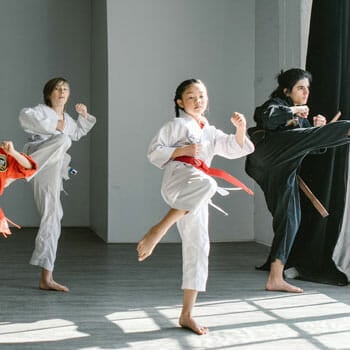
Brazilian Jiu-Jitsu is possibly one of the fastest-growing combat sports in the world, with BJJ schools popping up in every town, as per reports by the United States Judo Federation [1].
Judo is probably a more established sport, and you’ll have no problem finding a training class to best suit any student age group.
I have a few clients who have become students in both to practice the techniques and see which fighting sessions best suit their interests.
9. Popularity
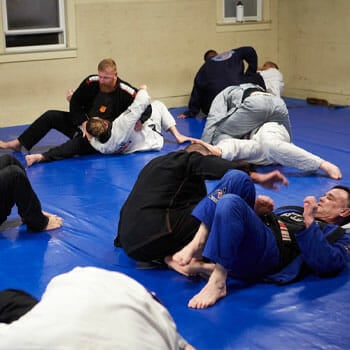
Right now, I would say that Jiu-Jitsu is the most popular.
One reason is that it does take self-defense a step further by giving a student more techniques to deal with competitors and disable threats.
You’ll see this in a Jiu-Jitsu match, where it’s less about scoring points and more about getting rivals to the ground and stopping them from getting back on their feet.
Choosing One For Your Goals
Choosing a style is a question of what your specific goals are in the sport.
1. Fitness
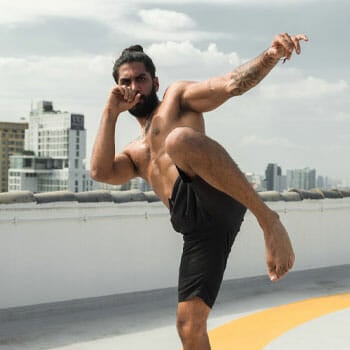
You’ll find that both a BJJ and Judo training class will be a great cardio workout and that you’ll be seriously sweating by the end of it [2].
It’s certainly not all about standing around and waiting your turn to practice takedowns.
While pros will work in the gym as well to gain more power and higher levels of fitness, it’s not something you have to do, especially if you’re not too interested in competitive matches.
Related: Best Martial Arts for Losing Weight
2. Self-Defense
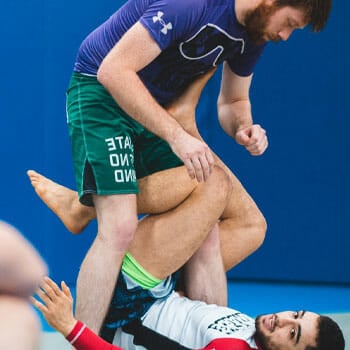
Both are great for a self-defense situation, but BJJ arguably gives you more training for dealing with a fight that goes to the ground.
In Judo, a fight tends to stop once you get to the ground and you stand up on your feet again.
Jiu-Jitsu takes it further to force submissions.
The part of the Jiu-Jitsu technique also allows for more aggressive moves that take the legs and feet from under practitioners.
And once experience gives you the upper hand, you’ll also use chokes to force submissions. Until then, consider refraining from using these techniques on real-life scenarios.
3. Competition
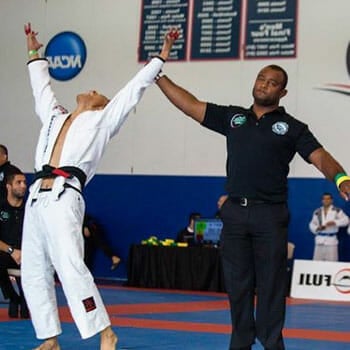
Both martial arts have seen increased popularity in competitive events.
But you could argue that Judo offers better options from a competitive perspective.
Not only is it a way to have access to more events, but Judo allows people to bring their skills all the way to the Olympics.
Now, there are plenty of Jiu-Jitsu competitions that offer matches for people of all ages and size categories, but it’s not quite as well established as Judo.
So, if you’re interested in bringing your success to a match situation, then Judo might be the best option for you.
4. Mixed Martial Arts

If you follow mixed martial arts and the UFC, you’ll have seen some kind of BJJ ground technique in pretty much every fight.
Many UFC fighters will attend regular BJJ classes and pay a lot of attention to cross-training with Muay Thai and other disciplines.
And if you’re into MMA fighting, the question mainly comes down to what amount of groundwork you need to learn to have a strategy for when you’re not standing on two feet.
BJJ is definitely the better art to have for MMA fighters, as it focuses on many types of arm, head, and leg locks, as shown by MMAFighting.com [3].
Related Articles:
FAQs
Is Judo Better Than BJJ?
Yes, Judo is better than BJJ for grappling while standing up. But BJJ offers more emphasis for training partners to learn grappling on the ground. Both provide a strategy for self-defense using minimum effort for maximum effect.
Why Is BJJ More Popular Than Judo?
Yes, BJJ is more popular than Judo because it seems to have gained more traction online and on social media. Of all martial arts, BJJ has put the most emphasis on creating great online resources to attract a higher student inflow.
Why Is Judo Cheaper Than BJJ?
Judo is cheaper than BJJ mainly because there are more Judo schools and instructors. BJJ is struggling to keep up with demand, and that is always a factor in the cost of joining classes. A lot of Judo schools also use community centers making them cheaper to run.
Is Bjj Safer Than Judo?
Yes, BJJ is safer than Judo based on data about competitive event injuries. While BJJ and Judo have similarities in how they deal with opponents, Judo relies much more on the throw technique, making it a higher risk than the BJJ wrestling techniques.
Which Is Harder: Judo or BJJ?
Judo tends to be harder than BJJ because it involves trying to shift competitors across your body to get them to the ground. BJJ tries to catch them off-guard and uses wrestling techniques to gain a dominant position.
References:
- https://www.usjf.com
- https://judoinfo.com/fitness/
- https://www.mmafighting.com/2017/12/27/16715220/technique-talk-rafael-lovato-gives-a-progress-report-on-bjj-in-mma
About The Author
You May Also Like
